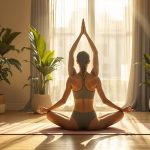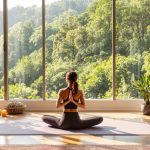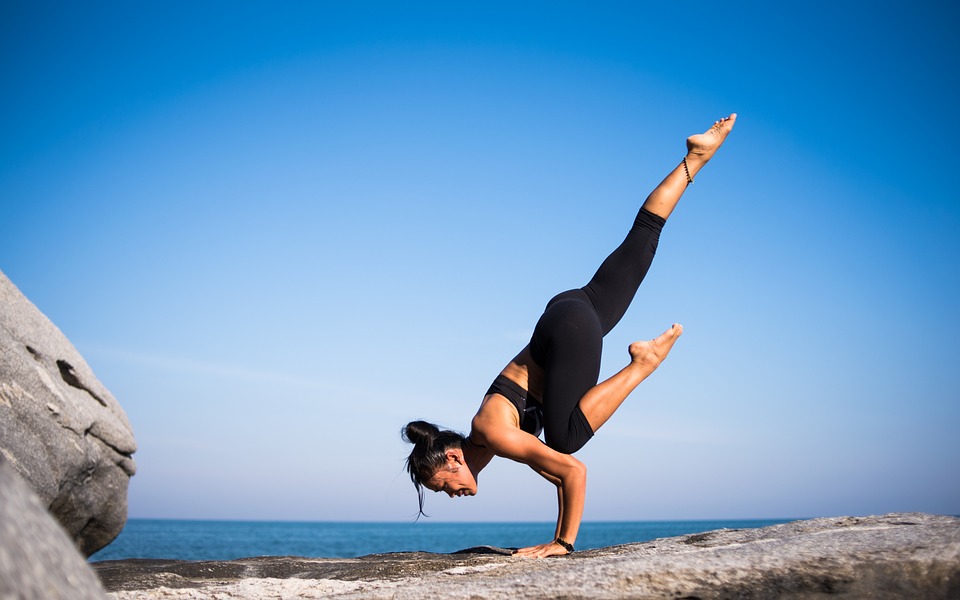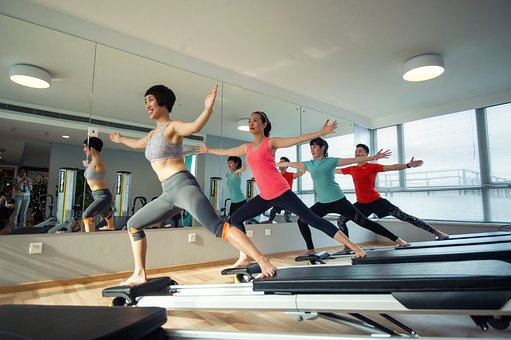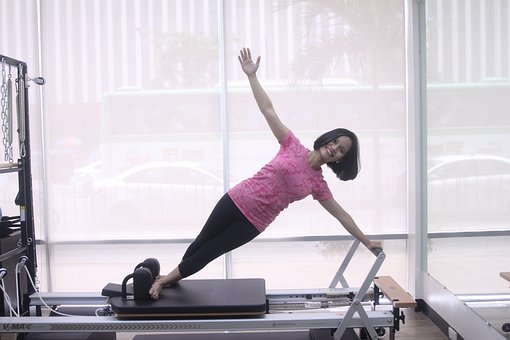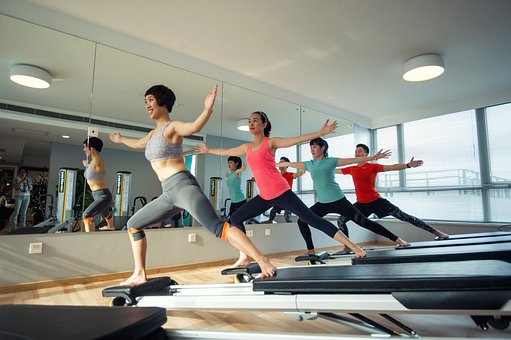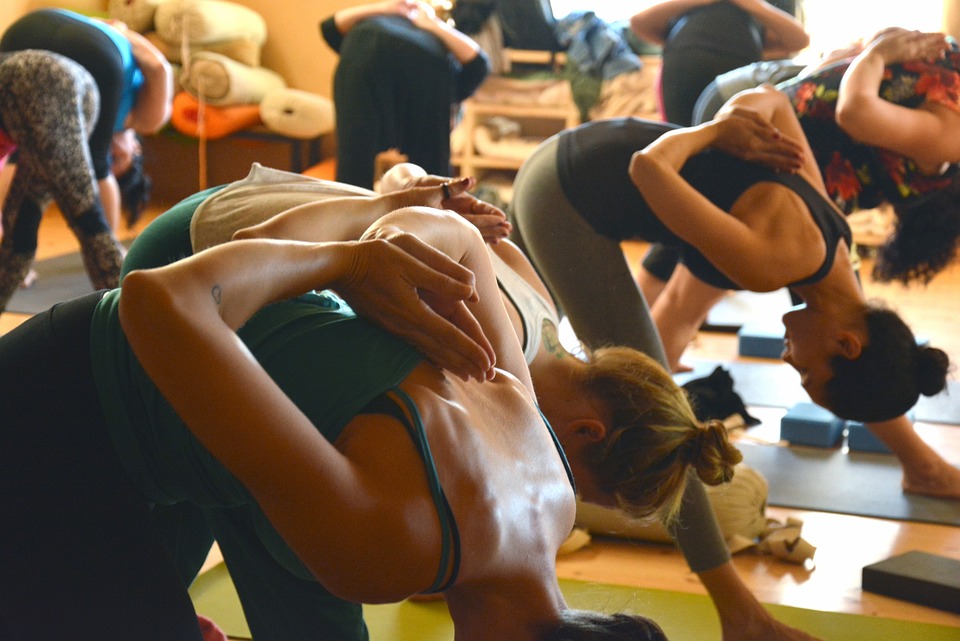
Mindfulness in movement is the true essence of healing and strengthening practice, and Pilates – like yoga – is one such practice.
Pilates has been a popular mainstream exercise modality for quite some time, but many aren’t aware of its origins, background, benefits, and key nuances of the practice.
If you’re wondering what is Pilates, or if you already love Pilates but want to learn more about it, read on to explore the origins, key principles, and benefits of Pilates. In this article, we will also hone in on a few unique aspects of what Pilates can offer.
What Is Pilates and What Are the Benefits?
Pilates, in the physical sense, is a series of small, isolated movements that together form the foundation to efficiently move every muscle and joint in the body. The key to Pilates is that it is movement training.
The essence of Pilates teaches you things like how to move your arms with the correct support from the underlying muscles of your lats. It teaches you how to perform a squat with the correct alignment of your feet, knees, and hips.
The key to Pilates is that it is movement training.
It teaches you precisely how to engage all the layers of your core and how to align your spine in all movements. And these precise, isolated movements integrate to create the efficiency of the whole system of your body.
Joseph Pilates, the founder of the Pilates practice, advocated that the true approach to health and fortitude is an authentic mind and body connection.
The beauty of the benefits of Pilates is that whether you are on the machines, the mat, or simply walking down the street, they have the potential to transform your body.
Where Does Pilates Come From?
Joseph Pilates is the creator of this practice. Born in Germany, Joseph Pilates’ early life is not well known, but research suggests he suffered some ailments as a child, like asthma, rickets, and rheumatic fever.
Son of a gymnast, he began performing in the circus in 1910. Then he became a boxing and self-defense instructor before being interned during the First World War. It was during this time that he developed his approach to movement, by training his fellow internees. He later worked in hospitals to rehabilitate patients.
It was here that the concept of the “Cadillac” machine was born. Pilates attached springs to his patients’ hospital beds to support their limbs and add some gentle resistance for strengthening.
Upon moving to the US in the 1920s, Pilates and his wife opened the inaugural Body Conditioning Gym in New York teaching what was then named “Contrology.” He continued to develop his work there.
It was not long before the dance world discovered the benefits of the Pilates approach and legendary dancers like Jerome Robbins, George Balanchine, and Martha Graham began to practice his system.
He is the inventor of the Pilates method and the accompanying machines, and one of the godfathers behind the ideology of restoring the body through precise, aligned, and conscious movements. The essence of Pilates lies in the principles of breath, concentration, centering, control, precision, and flow.
His work started to reveal that focused alignment and muscle patterning have just as much to do with strength as adding weights and repetitions and play a large role in one’s overall well-being and longevity.
Pilates 101 – Here Are the 2 Different Types of Pilates:
Like yoga, Pilates has many different families of exercise that appeal to different practitioners.
Pilates mainstream is colorful. There are large classes – on both the machines and on the mat – that burn through your core leaving you as sweaty as a Hot Yoga class. There are also eloquent offerings with smaller classes, that really hone in on alignment while building strength and accessing your core.
Focused alignment and muscle patterning have just as much to do with strength as adding weights and repetitions and play a large role in wellness and longevity.
And there is a very therapeutic realm as well. In this style, Pilates can be instrumental to rehabilitation, to repattern muscle chains, and on the subtlest level, to reorganize your movements into sublime efficiency.
Overall, Pilates is primarily offered in two different formats: mat and machine. If you are interested in trying Pilates, explore these different formats as well as different teachers to find what you’re looking for.
1. Mat Pilates
Mat Pilates is a series of fundamental core-based exercises performed simply on the mat. Mat classes emphasize the placement of the pelvis to correctly engage the core and support the spine.
From there, the exercises establish how to integrate the legs and arms into core work. Once these levels are mastered, you learn to perform more full-body exercises and bring these activations into standing movements to strengthen your standing posture.
This work definitely sweats the small stuff, and these lessons apply to everything you do, from sitting to standing to picking up heavy objects.
2. Machine Pilates
Most group classes take place on the reformer, however, there are various Pilates machines to facilitate support in certain groups of exercises, which are usually experienced in private sessions.
The reformer is designed for the rehabilitation of the spine. It’s a spring-loaded “bed” with a raised foot bar to perform resistance exercises like footwork and bending and stretching the legs.
The pulley system attached to the upper part of the frame provides resistance for the arm and leg work. There isn’t a single muscle group or exercise you can’t target, stretch, or isolate on the reformer.
The nature of the reformer is a realignment of the bones and joints so the muscles can fire correctly, in the correct sequence, and with the right amount of force needed to create a balance between flexibility and strength.
Working on the reformer can range from rehabilitation to high-intensity repetition workouts.
Pilates 101 – Here Are 5 Key Principles and Benefits of Pilates:
Let’s explore the basic principles – along with the benefits – of Pilates.
1. Core, Core, Core
So often in movement classes, your teacher will instruct you to “engage your core.” In Pilates, you will learn how.
You will learn what the major muscle groups are, how they work, and how to “engage your core” and breathe simultaneously.
You will hear the words pelvic floor and perineum so many times, you’ll feel comfortable saying them in public. And you will feel confident to engage your core in every exercise from here on out.
2. Posture, Posture, Posture
Pilates will teach you how to use your core to support the length of your spine. And in turn, your spine will strengthen too.
With more integrity in your spine, your shoulders will round less. With less rounded shoulders, you’ll have less neck pain.
The ripple effect of having great posture is vast. And Pilates will teach you to find deep awareness of your spine and its functions.
3. Time
Slowing things down is a key principle of correcting alignment in movement. Pilates is movement education, and it takes time.
It takes time in a class to bring out your anatomy pictures, explain the functions of joints, show the mechanics, and explore the nuances of what you’re hoping to discover.
A patient practitioner will advance further because Pilates really does sweat the small stuff. It is quality – not quantity – in this practice, and slow repetitions are the key to success!
4. Isolation
The Pilates repertoire has this unique capability to isolate certain muscle groups and completely break movements down and then build these small muscle groups back up to execute full powerful, holistic exercises.
The Gestalt Principle applies here. Pilates has focus exercises for every distinct muscle group in the body. And when you put them all together, you’ve created one very strong, liberated body.
5. Neutral Pelvis
And finally, the concept of a neutral pelvis. There is a divergence in modern Pilates schools as to whether core work should be done with a neutral pelvis or whether core work should be practiced in a position where the lumbar spine is pressing against the mat.
A neutral pelvis is where, when lying on your back, your hip bones and pubic bone are in the same horizontal line. For most, this will mean there is a small arch in your lower back and that it’s not touching the mat.
This position honors the natural curve of the spine and promotes the most freedom for the spine and legs. However, many report pain in the lower back trying to hold this alignment.
The non-neutral position, when used correctly, can create amazing strength in the lower back, and really help to recruit the abdominals to support the lower spine. The downfall here is that it creates a slight “tuck” in the pelvis, which can tug on the spine or legs.
For the most part, understanding both schools of thought and using each technique when it is ideal for you is the best practice.
Pilates Today And The 6 Principles:
Our understanding of human anatomy and the moving body has evolved quite considerably since Joseph started teaching in the 1920s.
The application of Pilates has also changed in that time.
As well as using it to improve the physical fitness of clients, Pilates is now often a central tool in the rehabilitation of seriously injured patients. At times this means some radical modification of exercises and deviation from the repertoire!
Having said this, and despite all the scientific advances, even contemporary Pilates remains largely faithful to these 6 central pillars.
Proof, as if we needed it, that Joseph was a man ahead of his time.
Here we explore these 6 principles in more detail. We see how they stack up against science.
The 6 Pilates Principles:
Pilates Principles #1. Breath
Think of Pilates and the image of the powerful inhale and exhale of the “hundreds” exercise often springs to mind.
It is no surprise then that “breath” was one of the most essential aspects of Pilates for Joseph.
Indeed, he is quoted as once saying: “Breathing is the first act of life, and the last… above all, learn how to breathe correctly.”
Pilates Principles #2. Concentration
Anyone who has ever taken a Pilates class will know that this type of movement requires maximum focus. Try swirling your legs in the air whilst keeping your pelvis completely still and your shoulders relaxed. You get the picture.
However, for Joseph, “concentration” meant more than just the attention required to successfully perform each exercise.
In fact, he believed it was vital for his students to focus intensely on the movements their bodies were performing for them to reap both the mental and physical benefits of Pilates.
Pilates Principles #3. Centre
The idea of the center is linked to the concept of the Pilates “powerhouse”.
For Joseph, this area was a box covering the middle of the body, from the shoulders down to below the hip joints in front and the base of your bottom at the back. It is from this “box” that exercises in the Pilates repertoire are supposed to be performed.
Activation of this area can involve teachers cuing you to “scoop in” or “hollow” your abdominals.
Whilst these cues are said with the best intentions (to engage your core, tone your abdominals and protect your lower back) they can actually have a negative impact on the body.
Pilates Principles #4. Control
Pilates was originally called Contrology, so it’s not surprising that one of its central principles is all about “control”.
Joseph placed great emphasis on the importance of deliberately controlling every movement and all parts of the body when performing the Pilates repertoire.
He also designed the Pilates equipment for this specific purpose. Total control of the body is required to make sure the pulleys and springs of the machines glide smoothly.
But for him, control was about more than just the body though.
Romana Kryzanowska, one his original students, once said, “Pilates is about stretch, strength, and control. And control is most important because it uses your mind”.
As with the other principles, Joseph wanted his students to cultivate a mind/body relationship.
To do so, he believed participants in a Pilates class needed to exercise control over the mind to create exact movements in the body.
Pilates Principles #5. Precision
Unlike other movement practices, Pilates requires you to move in a very precise and exact way.
Teachers of Joseph’s method are often looking for certain shapes and movement patterns created using the body. This is achieved through very specific cueing and corrections during a class, with teachers often pointing out the muscles and bones that should be working at any given time.
Joseph believed this emphasis on perfect technique and movement helped his students to both break down existing bad habits and then learn how to move in a better way.
Pilates Principles #6. Flow
The ultimate goal of Pilates is to encourage the body to move with ease and fluidity through even the most challenging of movements.
Given that many of Joseph Pilates’s early clients were ballet students, it is unsurprising that there is this emphasis on beautiful, graceful movement.

